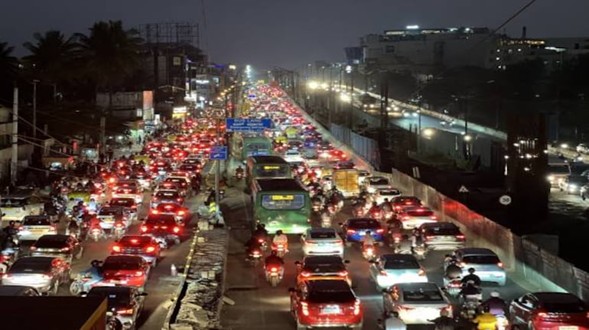Bengaluru Traffic Congestion Expected from 01 October
Starting 01 October 2025, Bengaluru traffic congestion is expected to worsen as several companies officially end work-from-home (WFH) and hybrid arrangements. This shift is anticipated to increase daily commuter volumes across the city, particularly along the Outer Ring Road (ORR) and adjoining IT corridors.
The return-to-office trend began in 2023 when many IT firms phased out hybrid work, citing productivity and collaboration needs. By 2025, most companies have transitioned back to full in-office schedules, further intensifying the city’s mobility challenges
Background
Bengaluru has consistently ranked among the world’s most congested cities. According to the 2024 TomTom Traffic Index, the average travel time to cover 10 km was 34 minutes 10 seconds, with commuters losing an estimated 117 hours annually in rush-hour traffic. Only 11.98 percent of commuters rely on public transport, with the majority depending on private vehicles
Adding to this, the Outer Ring Road Companies Association (ORRCA) has reported sharp increases in entry volumes to major tech parks in 2025. Peak disruptions are most noticeable on Wednesdays, when vehicle counts have exceeded 120,000 in a single day.
Impacted Locations
The following areas are expected to see the most severe Bengaluru traffic congestion:
- Central Silk Board Junction – linking ORR, Hosur Road, and Electronics City.
- KR Puram – merging traffic from Whitefield and Old Madras Road.
- Bellandur, Marathahalli, Kadubeesanahalli, Devarabeesanahalli – dense IT park zones.
- Mahadevapura & Whitefield Approaches – industrial hubs, malls, and residential inflows.
- Sarjapur Road and Intersection – heavy residential-commercial pressure.
- Electronics City Phase I & II – over 150,000 daily commuters.
Service roads along ORR remain chronically clogged due to illegal parking, poor road conditions, and waterlogging during rains
Government Response
Authorities have acknowledged the scale of the challenge:
- Bengaluru Traffic Police suggested companies adopt midweek WFH (especially Wednesdays) to reduce peak loads.
- Temporary traffic restrictions near HAL Airport Police limits were introduced in September 2025 to manage flow on ORR.
- A 110-km elevated corridor project, worth INR 18,000 crore, has been approved in principle to provide a long-term solution, with construction expected by December 2025
Recommendations
For Organizations
- Implement hybrid schedules or staggered office timings.
- Provide company buses, ride-sharing incentives, and public transport subsidies.
- Coordinate with traffic authorities and share office attendance data to improve planning.
For Individuals
- Allow additional travel time, especially on ORR, Sarjapur Road, and Electronics City routes.
- Opt for Namma Metro, commuter trains, BMTC buses, or safe walking/cycling for shorter commutes.
- Female commuters are advised to use well-lit, secure routes during early or late hours
Outlook
The end of WFH is expected to push Bengaluru traffic congestion to record levels, especially during peak office hours. While authorities are advancing long-term infrastructure projects, commuters and businesses will face immediate challenges requiring flexible strategies and adaptive mobility solutions.
Conclusion
From 01 October 2025, Bengaluru traffic congestion will intensify as office attendance rises across major tech corridors. Until infrastructure catches up, both organizations and individuals must plan proactively to mitigate delays, safety risks, and operational disruptions.


